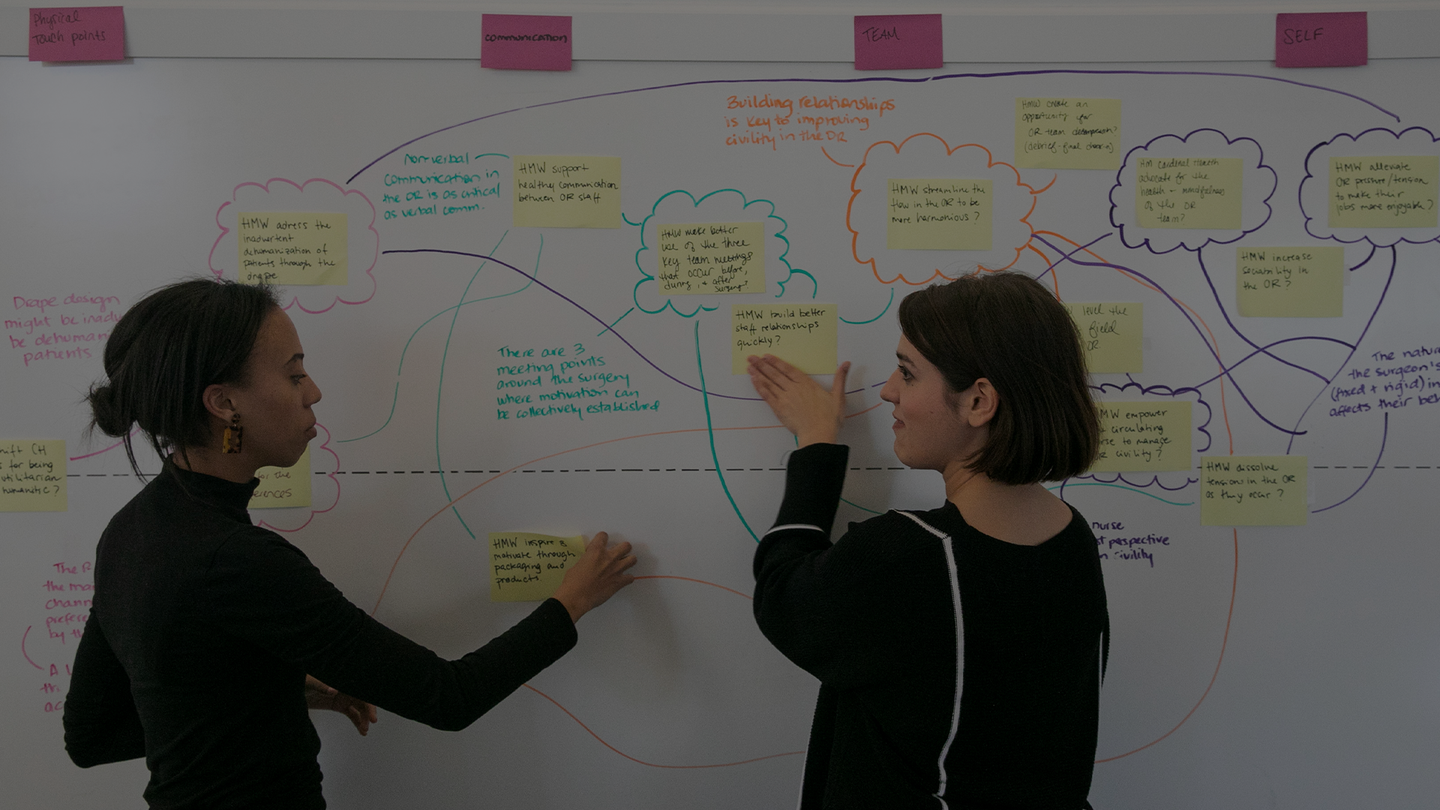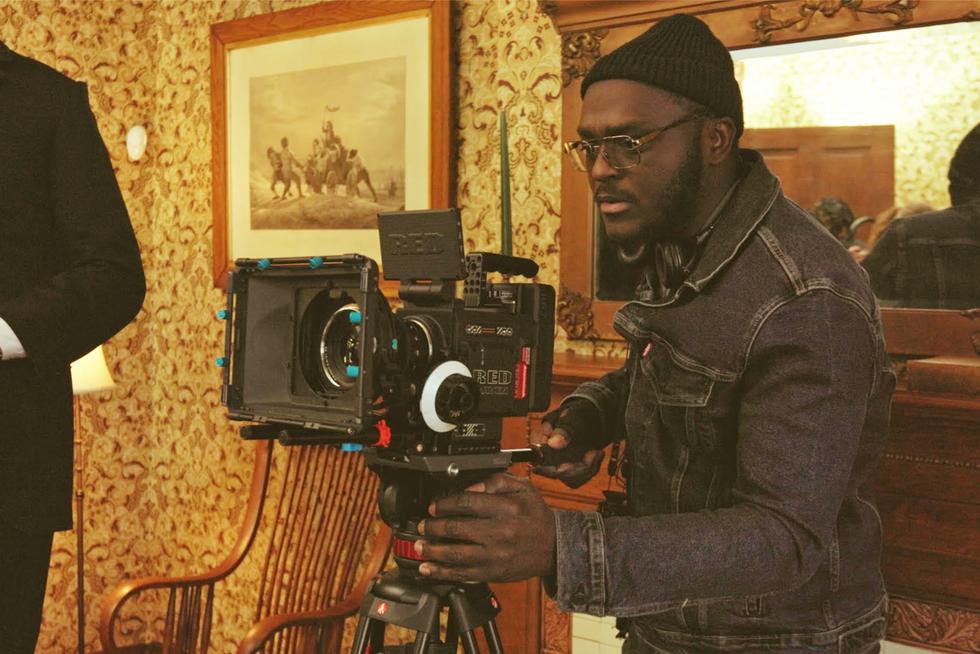Online Master of Professional Studies in UX Design

CCAD is the place to learn creative problem solving
While UX has traditionally been associated with software and website interface design, the true value of UX is far broader. UX design can impact systems, information, environments, and much more. It’s about solving challenges, improving systems, and preparing organizations for the future. Graduates develop the knowledge and the tools that employers are looking for—and that the world needs.
This is not a bootcamp. This is not a certificate program. At CCAD, you’ll learn from practicing UX professionals and other subject-matter experts, in an online, 30-credit, non-terminal, accredited master’s degree program designed to fit the needs of working professionals. You’ll gain the essential knowledge and experiences for you to thrive in this growing field—and you'll do it on a flexible, part-time schedule that allows you to keep your full-time job.
Improve the world, one user experience at a time.
User experience (UX) design is increasingly important in not just business, but in any organization that seeks to engage customers and audiences. Human-centered UX design can simplify complex tasks, establish greater empathy, and create solutions that are more effective, inclusive, and equitable.
UX Design courses at CCAD
Learn human-centered design with rigorous courses of study.
Design Research I - Discovery
This course will introduce students to the study design and qualitative research methods employed within professionally-focused human-centered design projects. In this process-driven course, the lessons will be structured around design research methodology, execution, and reporting. Through readings, discussions, and the exploration of examples, guidelines, and heuristics, the course engages students in the ethical and entrepreneurial aspects human needs and opportunity research within service and product design practice.
Design Research II - Feasibility
The feasibility of a design is at the core of user experience design. This course focuses on research methodsand processes to evaluate the design options and business feasibility for interactive products, services, andexperiences. This course looks at product and service feasibility assessments across the design lifecycle, usingpublished case studies and real-life projects. Interface design activities include product usability study design,execution, evaluation, competitive and market analysis, and reporting. Through reading, analysis and hands-onlabs, students will learn the costs of bad design, and gain a practical understanding of common interfaceassessment tools.
This course introduces the basic concepts of design on print, digital and spatial media. The elements of font, layout, design patterns, composition and color theory are explored and explained. Students will learn how these visual design elements are affected by spatiality, movement, duration, and production format (physical or digital). Professional best practice across the design fields are explored in relation to: interface and graphic production; waypoints and signage; and print and spatiality.
Because UX is now a core business function in many industries, knowing how to be an effective team memberor team leader is crucial to professional success. This involves knowing how to schedule, coordinate andsupervise time and resources in projects. This also involves knowing how to be an effective team member incross-functional teams that include UX, engineering, accounting, and marketing. This course will increase yourleadership skills around project-oriented collaboration, coordination, and conflict management.
Designers need to understand people and their diverse set of needs, in order to design appropriately fordifferent populations of interest for a product or service. This course will provide students with an overview oftheories that explore how people are educated, shaped, directed and constrained by social forces and norms,built into small and large groups, social institutions and society. The overall purpose of this course is to instill asense of professional empathy into designers, in order to understand the potential emancipatory impact of newsocial arrangements and new uses of technology for social good.
This survey course will introduce students to the science and practice of designing human interactions for avariety of digital and physical interactions, in a seminar-style class. Starting with an introduction to interactiondesign as a knowledge domain and area of professional design practice, the course moves into an overview ofhuman and behavioral science concepts as it relates to human action and objectives. The course then providesan overview of the four areas of human action that must be considered in design practice: social; behavioral;emotional; physical. The final module provides students with a practical overview of how to put the ideas andprocesses into practice, through different types of modelling and prototyping. Through pre-class preparatorywork, in-class lectures and discussions, and post-class assignments, students will engage in understanding andleveraging best practices from the field of interaction design towards their own professional practice.
User Experience Design is now part of many large industry verticals in the United States and globally. In thisdiscussion-based seminar course, students will learn how the UX Design field has reshaped 9 major industryverticals, from education to entertainment. By the conclusion of the course, students will be able to describe thesimilarities and differences of the impact of UX on business operations within and between the verticals.
This course explores how innovative services are developed through systematic processes. Using a systems-thinking approach, the course is structured around hands-on, collaborative projects, applying the diversemethods, techniques and tools of service design to develop innovative customer experiences. Students learnhow to identify potential areas of service, establish standards of delivery, define when and how to provide userinteractions (channels, artifacts, actors), and measure the impact to ensure value creation and profitability.
MPS in UX Design FAQs:
Bootcamps and certificate programs scratch the surface of UX education; CCAD’s degree goes deep, exploring the functional, emotional, and intellectual aspects of human-centered design—and how to apply it in current-day contexts. This is a sophisticated, credentialed degree that will open new opportunities for our graduates. In addition, while many bootcamps approach UX design from a technology standpoint, CCAD emphasizes service design, a more holistic approach that includes creative problem solving, social innovation, and integrations of products and services.
Yes! In fact, it’s a perfect opportunity for working professionals to add timely and relevant expertise to their skillset. The course schedule is part-time and online, with classes held in the evenings several nights per week. Students are able to graduate in two years while maintaining their full-time careers.
These tests are not required for enrollment. View the application form for other requirements.
Find your place in a growing field
UX design professionals are in high demand in healthcare, social services, government, financial services with roles like:
- Environmental designer
- Product designer
- Digital marketer
- Product owner
- Service manager
- UX strategist
Faculty
Meet the people who will help you along your creative and professional journey.






